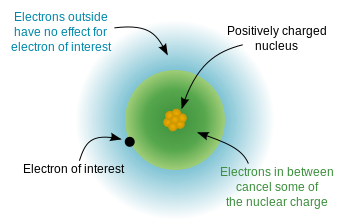For example, take the 2s electron in lithium - is the reason that it's ionisation energy is lower than would be expected if "shielding" didn't occur at all because the 1s electrons shield the attractive coulombic force from the nucleus or because the 2s electron is repelled by the 1s electrons? Is it possibly a mixture of the two?
To me, shielding seems to be a model to help conceptualize what is actually happening; am I wrong about this? What is actually going on?

 (
(